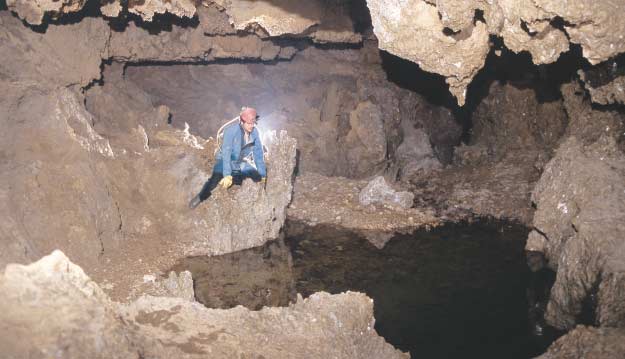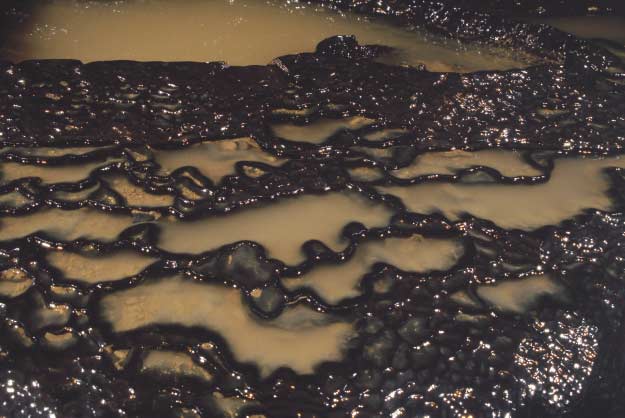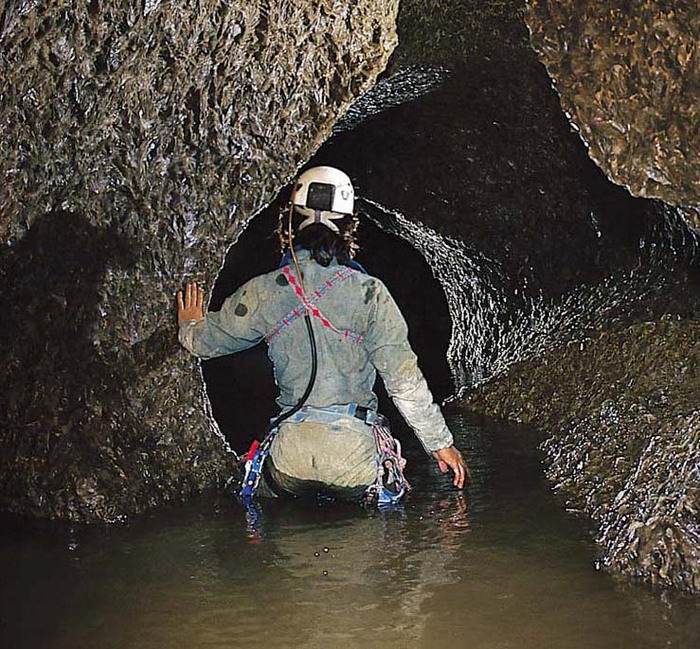
Underground lake in the Cueva del Peral
As well as the spring at Los Molinos there are other much more modest springs that are directly related to the large gypsum caverns of the Sorbas gypsum. These are the springs of Las Viñicas, El Tesoro, El Peral, Los Apas, El Infierno and La Fortuna.
Perhaps the most significant of these is Las Viñicas Spring, which drains the Cueva del Agua, the biggest cavern of the Sorbas Karst. Under normal conditions the flow from the spring is less than 1 litre per second. However, during periods of heavy rainfall flows of more than 1000 litres per second (1 m3/s) can be recorded. This is typical of a karstic spring: large variations in the flow as an immediate response to heavy rainfall.
To study the effect of storm flows within the cavities, dyes such as fluorescein are added to the water. Using this method of dye-tracing, it was found that water that infiltrated during a storm via a sinkhole 1 km away from the resurgence took 2 hours to reach the spring, while after a dry period over the same route the transit time was 50 hours.
During these spate flows a large proportion of the subterranean galleries are completely flooded making access to the galleries impossible. Under adverse weather conditions maximum precautions are required and visits to the cave postponed for another occasion.

Underground lake in the Cueva del Peral

Under normal conditions the flow in he caves is less than 1 litre per second

Galleries flooded in the Cueva del Agua (Las Viñicas Springs)